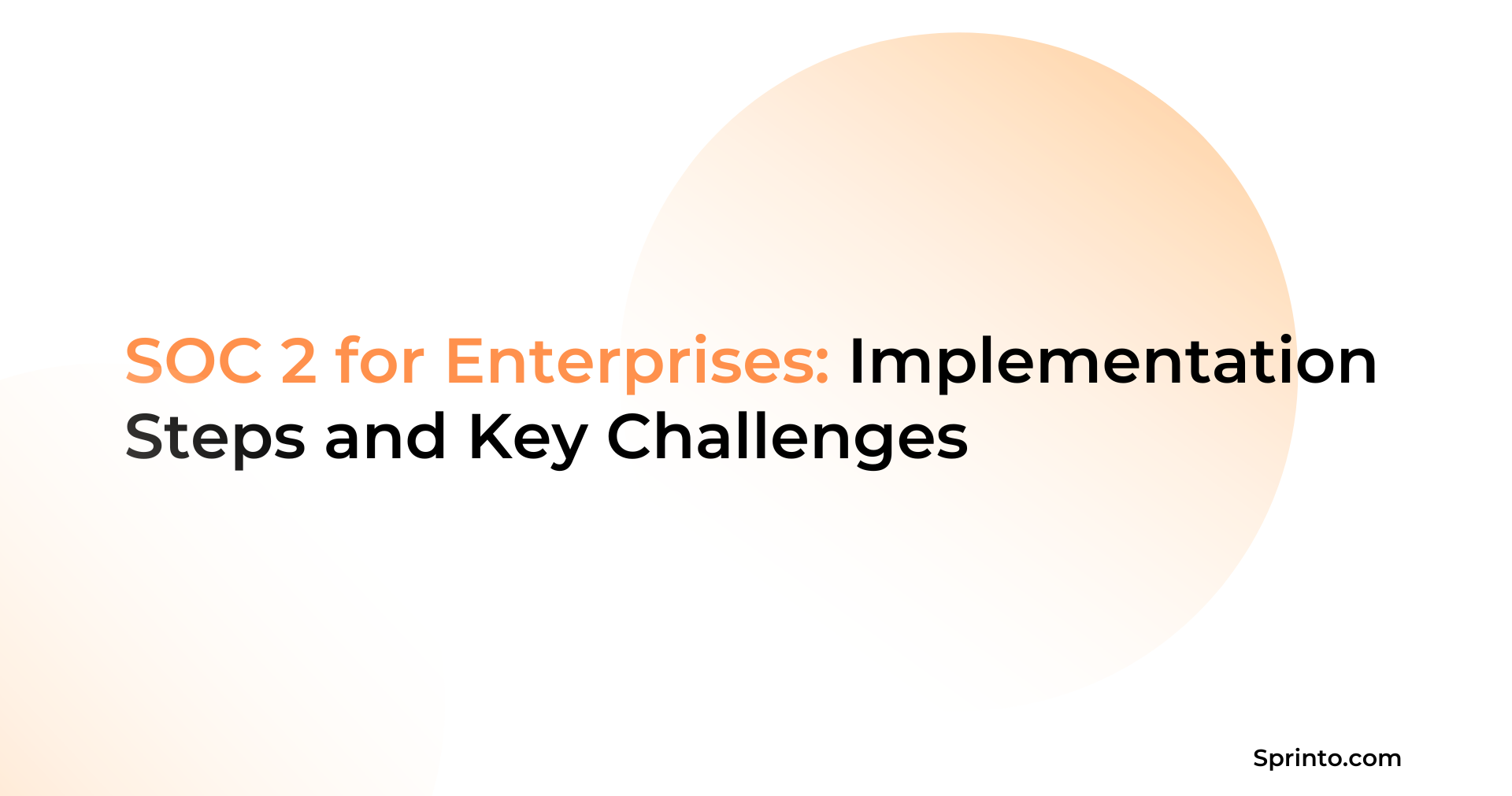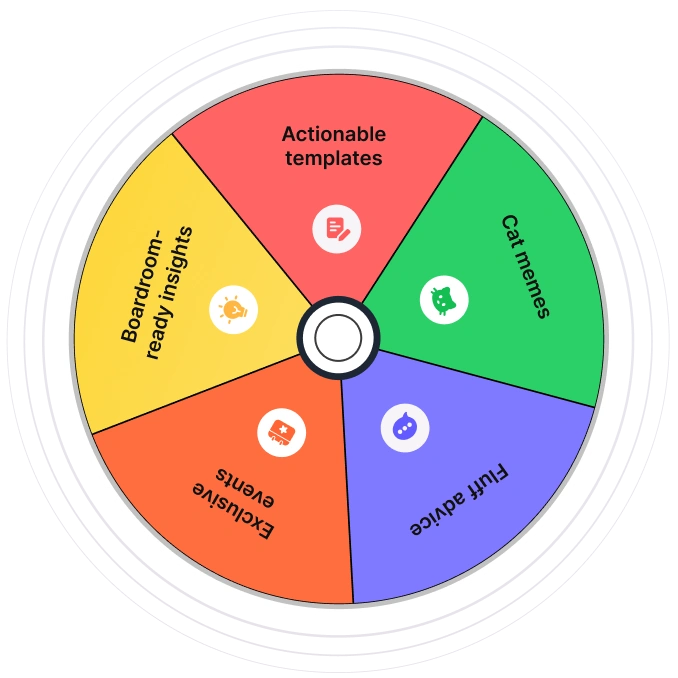SOC 2 (Service Organization Control 2) is a leading compliance framework created by the AICPA that checks if a company’s security controls meet the five ‘Trust Service Criteria’: Security, Availability, Processing Integrity, Confidentiality, and Privacy. A SOC 2 certification provides independent assurance that your company follows best practices to keep data secure and services reliable.
TL;DR
- SOC 2 compliance is a security framework developed by the AICPA for managing customer data, based on five Trust Service Criteria (Security, Availability, Processing Integrity, Confidentiality, Privacy). It’s especially critical for enterprise cloud and B2B companies to demonstrate strong controls and build customer trust.
- Why it matters: Large organizations often require SOC 2 attestation from their vendors. In fact, SOC 2 has become table stakes for winning enterprise contracts – many big companies won’t even consider a provider without it. Achieving SOC 2 builds trust, unlocks bigger deals, and differentiates you in security-conscious markets
- SOC 2 Type I vs II: A Type I report is a one-time snapshot of your control design, while Type II proves those controls work over 6–12 months. Enterprises almost always need SOC 2 Type II for robust, ongoing assurance. Type I can be a stepping stone, but Type II carries more weight for clients.
- SOC 2 at enterprise scale means defining scope, running a readiness assessment, mapping and implementing controls, and completing a Type II audit with ongoing monitoring. Sprinto automates up to 80% of the work, integrates with 200+ systems for real-time monitoring, and provides auditor-ready dashboards
What is SOC 2 for enterprise?
SOC 2 for enterprises proves that their security practices successfully scale across thousands of employees, multiple product lines, and complex IT environments.
The core SOC 2 controls and audit criteria stay the same for a 50-person startup, as well as a 5,000-person enterprise, the difference being scope and complexity. Instead of managing a single cloud provider and a handful of apps, enterprises must account for dozens of systems, global operations, and layered vendor relationships. This demands a more formalized compliance infrastructure and dedicated processes to keep everything aligned.
Why SOC 2 matters for enterprises?
SOC 2 is crucial at an enterprise level given the stakes are higher. A single security lapse can undermine years of credibility, disrupt customer relationships, and even stall multimillion-dollar deals. Enterprises selling to other large companies face heightened scrutiny, with clients and regulators alike expecting airtight proof of security before contracts are signed.
Then there’s the third-party risk angle. As an enterprise grows, it relies on many vendors and partners. Your own SOC 2 compliance sets a tone for security that can extend to those relationships.
In practice, SOC 2 has become essential for successful enterprise businesses in SaaS, finance, and other data-sensitive industries. Beyond reducing internal risks, SOC 2 certification for enterprises establishes trust, a competitive advantage that proves your organization is secure, reliable, and ready to scale with minimal risks.
SOC 2 requirements for enterprise organizations
The foundational principles remain the same for everyone, but the application is vastly more demanding for enterprises due to its breadth and depth. There are many more systems, processes, and teams to cover, often a higher bar for formality and consistency.
These are the major SOC 2 requirements in an enterprise context:
1. Security
Mandatory for all SOC 2 audits. For an enterprise, security controls must span multiple domains: access management, network security, vulnerability management and patching, secure software development practices, antivirus/EDR on endpoints, incident response procedures, and more.
2. Availability
These controls guarantee system uptime and reliability. Typically, this means having disaster recovery plans, backups, and monitoring in place. For an enterprise, auditors will look for a formal Business Continuity Plan (BCP), defined Recovery Time Objectives (RTOs) and Recovery Point Objectives (RPOs) for critical systems, regular backup testing, and incident response drills.
3. Processing Integrity
This criterion is about ensuring your system processes data accurately and as intended. Required controls might involve quality assurance, input validation, reconciliation processes, and error handling.
4. Confidentiality
This focuses on protecting sensitive information like client business data, intellectual property, and financials from unauthorized disclosure. Key controls include encryption (in transit and at rest) for data stores, strict access controls, data classification policies, NDAs, and data loss prevention (DLP) solutions.
5. Privacy
This requirement references many of the security and confidentiality controls, but also adds requirements for privacy notices, consent, access/request mechanisms for data subjects, and compliance with applicable privacy laws. An enterprise might need a dedicated privacy policy, procedures for honoring user data deletion requests, and training programs on data handling.
SOC 2 type I vs type II for enterprises
When pursuing SOC 2 compliance, organizations must decide between a Type I and Type II audit. Understanding the difference is critical because only one option matters for an enterprise.
- SOC 2 Type I examines the design of controls at a single point in time. It asks: Do you have the proper controls in place right now? However, Type I does not tell whether those controls are consistently operating. It’s like a snapshot or a point-in-time report.
- SOC 2 Type II evaluates the operating effectiveness of controls over a period (typically 3–12 months). It asks: Do you have the right controls? And are they actually functioning correctly day-in, day-out? An auditor samples evidence from throughout the audit period to see if controls were in place consistently.
Type I essentially says “we have locks on the doors” whereas Type II says “the locks were tested and remained locked over the past year”. The rationale is simple: an enterprise’s risk exposure is continuous, so customers want assurance that your controls work continuously, not just on paper.
Steps to implement SOC 2 for enterprise
Implementing SOC 2 in an enterprise environment is about aligning strategy with compliance. These key steps will help ensure you cover all bases from planning to certification:
1. Define scope and trust criteria
Start by identifying which systems, data flows, and services fall under the SOC 2 scope. Enterprises must also select relevant Trust Service Criteria beyond Security. Getting this right prevents over-scoping and wasted effort, while ensuring customer expectations are met.
2. Readiness assessment
Conduct a gap analysis to map existing controls against SOC 2 requirements. For large enterprises, this step tests the level of SOC 2 readiness for large organizations and reveals security practices that don’t align with compliance needs. The outcome is a prioritized remediation plan that covers policies, processes, and tools. It ensures you enter the audit prepared rather than scrambling last-minute.
3. Implement and map controls
Introduce or update technical and procedural controls that satisfy SOC 2 criteria. This includes access controls, encryption, change management, and employee training. Enterprises must map each control to audit requirements, ensuring every criterion has clear coverage.
4. Collect evidence and monitor continuously
Run controls consistently and gather evidence to prove effectiveness. At enterprise scale, use continuous compliance monitoring and centralized evidence collection tools to streamline the process. Proactive alerts help catch drift early, reducing audit risk and keeping enterprises in a state of readiness.
5. Undergo audit and maintain compliance
An independent auditor tests your controls over a defined period. Once the SOC 2 report is issued, enterprises must remediate any exception to stay compliant. Because SOC 2 renewals are annual, maintaining compliance isn’t a one-off project; it’s an ongoing program built into everyday operations.
Challenges enterprises face in SOC 2 compliance
The scale and complexity of large organizations introduce unique hurdles that smaller companies might not encounter. Here are some of the key challenges enterprises face in the SOC 2 process:
1. Complexity at scale
Enterprises often operate in multiple regions, use a vast array of technologies, and have many teams involved in systems and processes. Coordinating a SOC 2 program across different departments is a major project. Consistently scaling security controls and documentation across differing environments is difficult.
2. Framework and Regulatory Overlap
Complying with ISO 27001, SOX, PCI-DSS, HIPAA, or other standards in parallel can create a heavy compliance burden if not handled in a structured manner. Enterprises can struggle with mapping controls that overlap across frameworks, resulting in duplicate work.
3. Scope
Include too much and you overwhelm the project; include too little and the report might not be meaningful to customers. If you realize mid-audit that a critical system was left out, that’s a problem. Conversely, some enterprises scope broadly and then struggle to gather evidence for everything.
4. Evidence Collection
Traditional methods (emailing people for screenshots, manually downloading logs) become impractical at enterprise scale. Many compliance teams find themselves drowning in spreadsheets and SharePoint folders trying to organize evidence. It’s easy to miss something; chasing down busy colleagues for artifacts can cause frustration.
5. Maintaining Continuous Compliance
Enterprises must ensure that controls don’t lapse over time. Staff turnover, organizational changes, or simply complacency can lead to drift. Continuous compliance monitoring is difficult because it requires constant vigilance and integration into daily operations. Without an automated alerting system, it’s challenging to know in real-time if something falls out of compliance.
6. Integration Challenges
While automation is the answer to many SOC 2 burdens, integrating compliance tools in a complex enterprise environment can be challenging, too. Large organizations might have homegrown or legacy software that doesn’t have easy integrations. Ensuring various IT platforms (HR systems, ticketing systems, cloud platforms) are properly connected to your compliance monitoring solution can require significant upfront effort and even custom development.
Top 3 compliance software for enterprise
For SOC 2 and security compliance software, a Enterprises seeking SOC 2 certification face unique challenges—complex tech stacks, global teams, and vast evidence requirements. A few platforms stand out as popular choices for enterprises.
| Criteria | Sprinto | Drata | Vanta |
| Best For | Enterprises needing deep automation, speed, and scale | Growing companies need robust monitoring | Startups/SMBs aiming for fast SOC 2 readiness |
| Key Features | Automates ~80% of SOC 2 work200+ integrationsPre-mapped controls to frameworksAuditor access directly in-platformCross-framework reuse (SOC 2, ISO 27001, HIPAA, PCI-DSS)White-glove compliance support | 120+ integrations, Continuous control monitoring, Dynamic policy management | Hourly checks, Smooth auditor workflows |
| Enterprise Edge | Built for large, complex environments with multi-team coordination, global ops, and layered vendors | Strong, but requires more manual tailoring at enterprise scale | Effective for small teams, but may lack depth for large orgs |
| Pros | Industry-leading automation, Auditor-ready dashboards,Real-time compliance visibility,Expert support | Broad integration library, Policy-driven automation | Intuitive UX, Quick audit prep |
| Considerations | Modern platform designed for scaling security controls and handling enterprise complexity | More setup effort to achieve the same automation depth, specially for large-scale enterprises | May feel too lightweight for enterprise security programs |
Sprinto: Helps enterprises achieve SOC 2
Sprinto turns challenges faced by enterprises into strengths by automating the process end-to-end and keeping compliance live, not just annual.
Automation and integrations
Sprinto connects to over 200 systems, from cloud infrastructure to HR, DevOps, and ticketing. It automates evidence collection like logs, configs, and policy acknowledgments. This removes as much as 80% of manual compliance effort, helping teams move from chaos to audit-ready in record time.
Audit-ready with real-time monitoring
Sprinto doesn’t wait for auditor reminders. It continuously watches for control drift, surfaces audit artifacts on demand, and delivers compliance status through intuitive dashboards. Compliance becomes a byproduct of regular operations, not an annual scramble.
Reuse controls across frameworks
Enterprises juggling SOC 2 alongside ISO 27001, HIPAA, or NIST CSF benefit from Sprinto’s cross-mapped controls. Evidence sourced once can serve multiple compliance needs, saving time and avoiding duplication.
Collaboration made easy
Sprinto provides role-based workflows. Teams across departments (IT, security, HR, ops) get clear tasks and ownership. Auditors gain a dedicated dashboard through the Trust Center to review evidence directly on the platform, and there is no more chasing PDFs or endless email threads.
Expert-backed compliance success
Beyond software, Sprinto offers white-glove support, from onboarding to compliance best practices, and auditor introductions. Enterprises appreciate the hands-on guidance, which transforms compliance from a burden into a strategic advantage.
FAQs
1. How long is a SOC 2 Type II report valid?
A SOC 2 Type II report remains current for 12 months from the end of its audit period. After that, enterprises should plan for a fresh audit to reassure customers that controls are still operational and effective.
2. What’s the difference between ISO 27001 and SOC 2 Type II?
SOC 2 Type II is a U.S.-centric standard focused on how controls perform over time, based on AICPA’s Trust Service Criteria. By contrast, ISO 27001 is globally recognized and validates that your Information Security Management System (ISMS) is designed and maintained properly. Many U.S.-bound enterprises value SOC 2, while ISO 27001 resonates globally.
3. What can happen if we fail a SOC 2 audit?
There’s no ‘fail’ in formal terms, but an auditor may issue a qualified or adverse opinion if controls are missing or ineffective. That can slow deals or damage trust. However, you can fix issues post-audit and undergo a follow-up for a clean report. Fixing gaps proactively with platforms like Sprinto can minimize such risks.
4. Who is required to undergo a SOC 2 Type II audit?
Organizations that store, process, or transmit customer data in the cloud—like B2B SaaS, fintech, and healthtech firms often need SOC 2 Type II. It’s not a legal requirement, but market expectations make it essential for enterprise credibility and to unlock higher-tier contracts.
Sriya
Sriya is a strategic content marketer with 5+ years of experience in B2B SaaS, helping early- and growth-stage companies build and scale content engines from scratch. She specializes in long-form storytelling, thought leadership, and content systems that grow traffic and drive pipeline. Passionate about solving messy, early-stage challenges, she loves figuring out what to build, how to say it, and who it’s for.
Explore more SOC 2 articles
SOC 2 Compliance Overview
SOC 2 Preparation and Documentation
SOC 2 Audit and
Reporting
SOC 2 Differences and Similarities
SOC 2 Updates & Management
SOC 2 Industry-Specific Applications
research & insights curated to help you earn a seat at the table.







